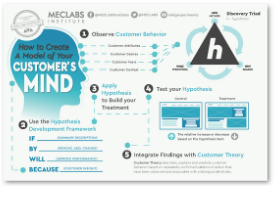Funnel Optimization: Why marketers must embrace change
We just wrapped the production of our 2012 B2B Marketing Benchmark Report. The overwhelming theme in this study of 1,745 B2B marketers is that the B2B marketing environment is becoming increasingly more challenging over time. In year-over-year (YoY) comparisons of the research, the perceived effectiveness of tactics has seen severe declines. MarketingSherpa wanted to get to the bottom of what’s really happening.
Marketers are all aware of the changes that have taken place in the market. Buyers research their purchasing decisions online, not by calling Sales. Marketers get that. But what are they really doing about it? Read more…











 The week before last, I attended Dreamforce, along with more than 45,000 marketing and sales professionals, as a guest of
The week before last, I attended Dreamforce, along with more than 45,000 marketing and sales professionals, as a guest of 





